The plan was to take off last night, ski or hike — depending on snow conditions — to Castle Rock (a prominent rock column just south of Mt. Erebus and about 4 miles north of McMurdo, and sleep in one of the survival huts along the route.
That was the plan. However, I needed to sleep. Like, good sleep, without an alarm set, flat out, totally zonked sleep.
So, we canned that plan and I went to bed early. Richard went to CrossFit.
I slept until 10 a.m. Our room is nice in that it is in the interior of the building. That means, once the lights are out, it’s dark. When we woke up, we read for an hour or so. Then slowly made our way downstairs to brunch.
Around 1 p.m., we walked over to the Firehouse and checked out for our aforementioned Castle Rock hike. Anyone who leave the station must sign out with the Firehouse and take a radio. You also have to let station know when you think you’ll return by and check back in once you’re back. If you go over the allotted time you gave for the off-station activity, they send out searchers. We were told, the response time is quick, almost immediate. Within 5 minutes past your check-in time, about 50 people have been notified of your absence. By 30 minutes past, they are mobilized and looking for you. It is very important to check back in or call with the radio if you are okay but going to be late.
The dispatchers at the station wore metal bracelets attached to a grounded panel on the desk by a conductive wire. Because of the low relative humidity, the static can really build up and can even blow the radios they use to communicate with people off and around the station. The static had even blown ethernet ports in some computers. When Richard got to McMurdo in September, the relative humidity inside the buildings was 4 percent. People were getting shocked just touching door knobs or hanging their jackets on metal hooks.
Once the Firehouse had us on their radar, we took off. We decided to walk, not ski. The snow was old and icy in some spots. It would have made for frustrating skiing. At times, it make for slippery walking.
We headed north from town, following the red-flagged route across the glacier. It was uphill for the first couple of miles and I got overheated. Dressing for the outdoors in Antarctica is tricky. It’s necessary to dress warmly, but if the sun comes out and the wind dies down, it can get hot. Then again, if a storm blows through, you could be stuck in a whiteout with blowing snow, stuck in a survival hut for who knows how long.
I ended up taking off my down vest and proceeding up the rest of the rise.
We stopped at the first hut, a red fiberglass and foam dome with benches and gear inside. They have some foam sleeping pads and a couple of sleeping bags for those who get stuck in poor weather. There’s also a propane stove and some random food. The food isn’t stored in anything, like you have to store food in the states, to protect it from mice or other animals. There are no animals to protect it from.
While we were walking, my brain tried to make the circular shapes in the snow be paw prints. I am so used to looking for mammalian prints in the woods, that despite knowing there were no mammals, that’s where my thoughts went first.
Once we were up on the ridge, the terrain flattened out and we made our way toward Castle Rock. Because visibility is so good, it can feel like it takes forever to make progress. We were able to see Castle Rock pretty much the whole way, but it took about two hours of hiking to get there.
The rock itself is exposed without snow. We walked to the north side and started up the trail to the top. It was surprisingly windless at the top. We could see the glaciers on Mt. Erebus and there was some smoke coming out of the top. Erebus is the southern-most, active volcano on earth.
We hiked down and took the rest of the 10-mile loop east and then south to Scott Base, the New Zealand presence on Ross Island and then back over to McMurdo.
We made it back in time for dinner and laundry.
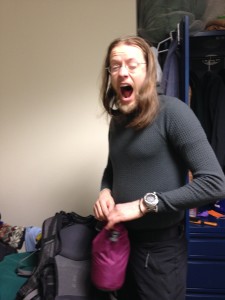

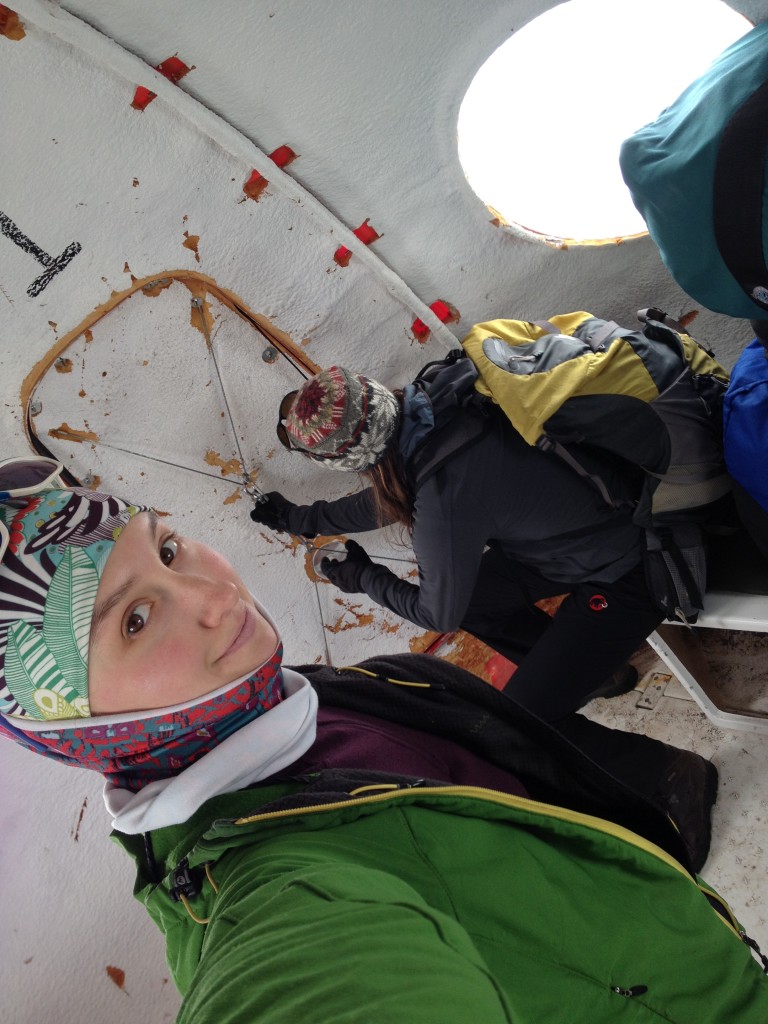
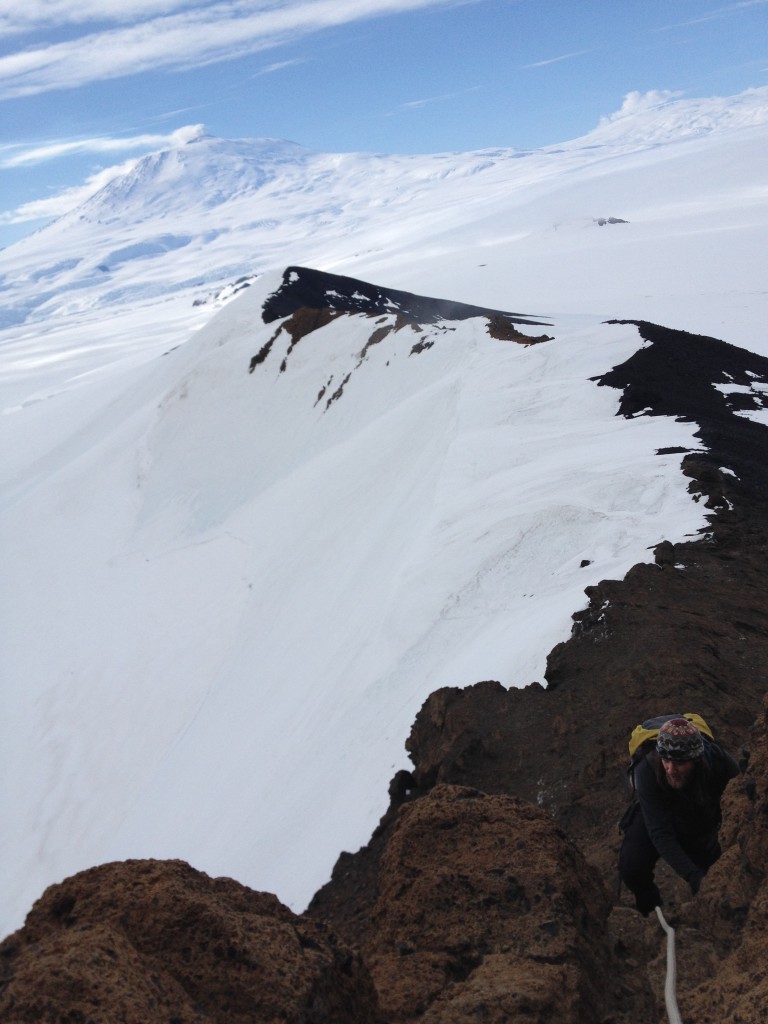
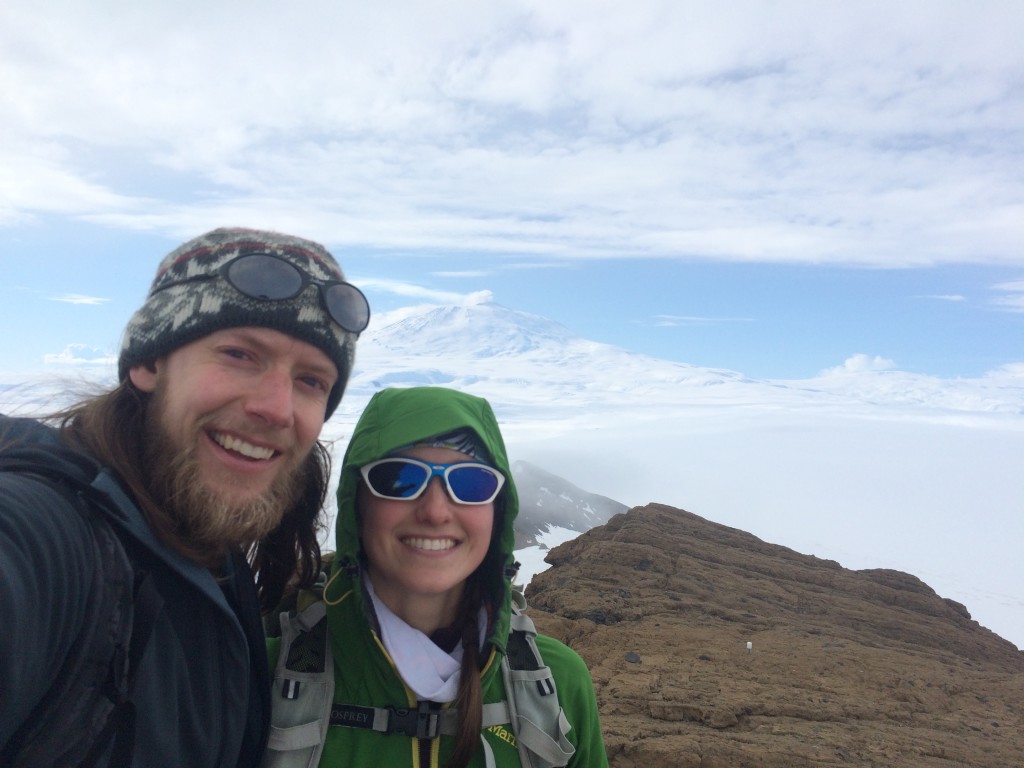
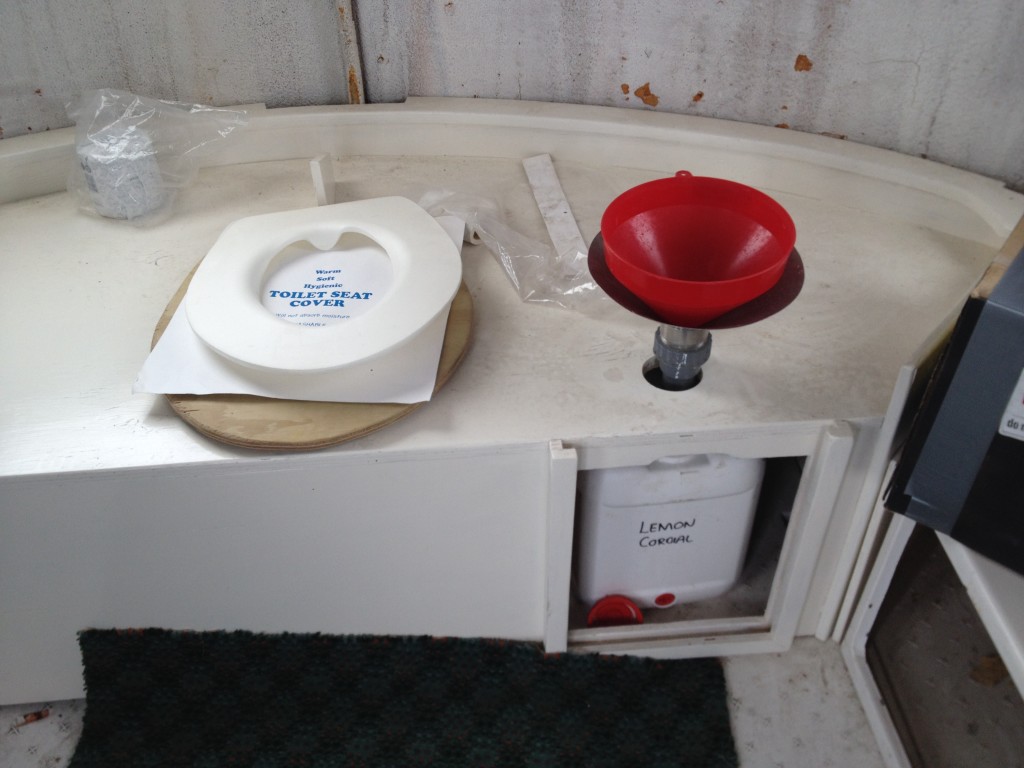
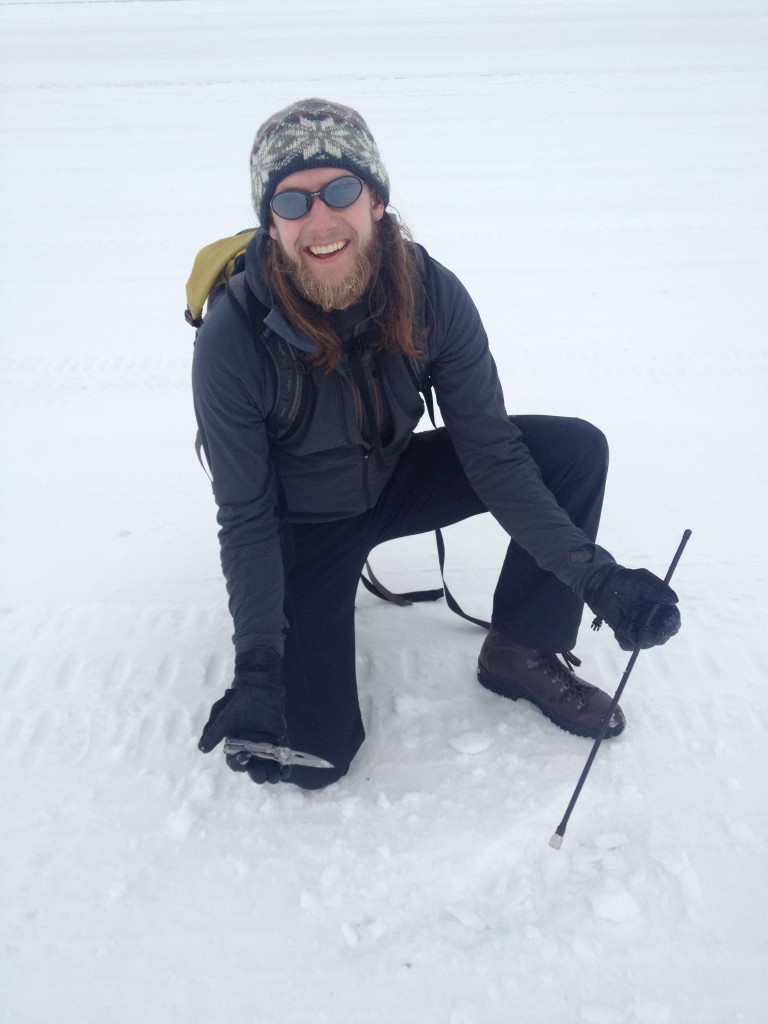
I like the way you give educate and slide in the human interest element in your writing.